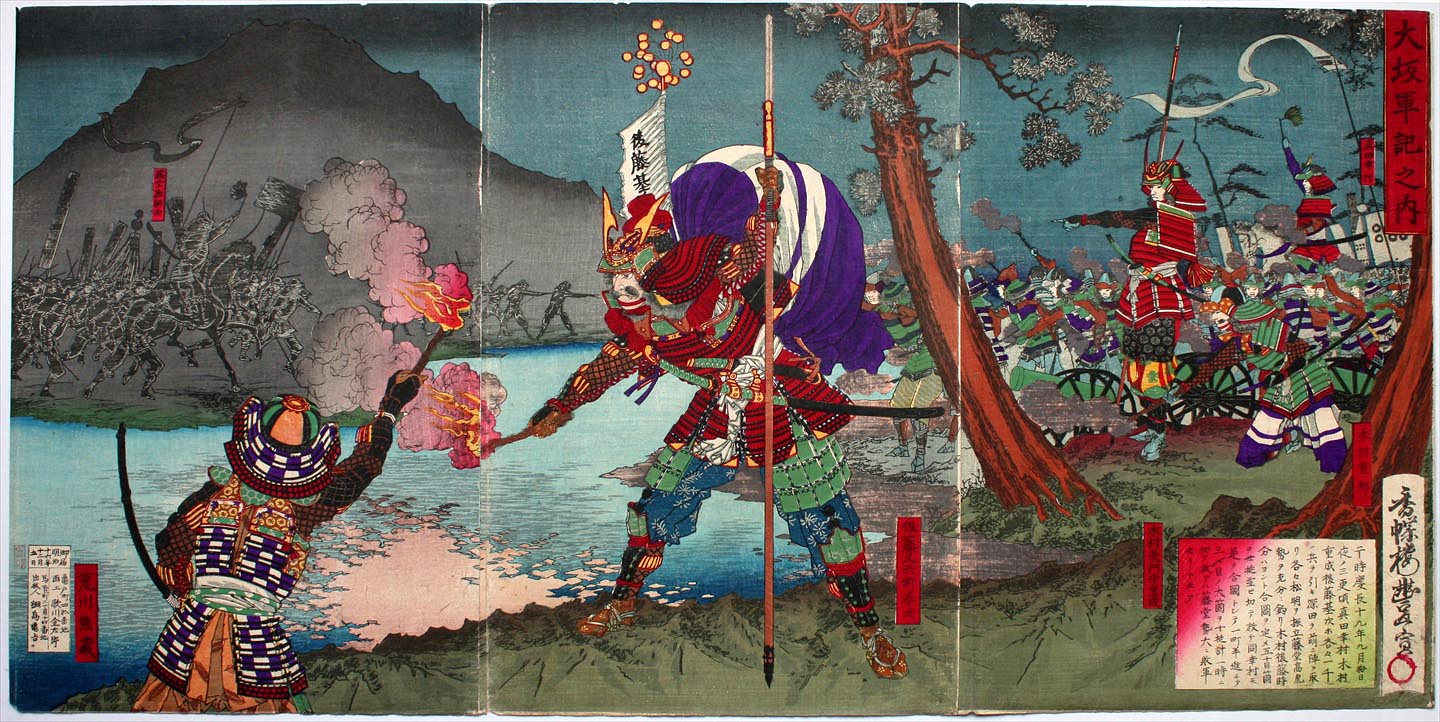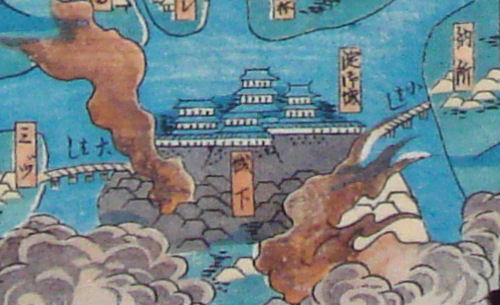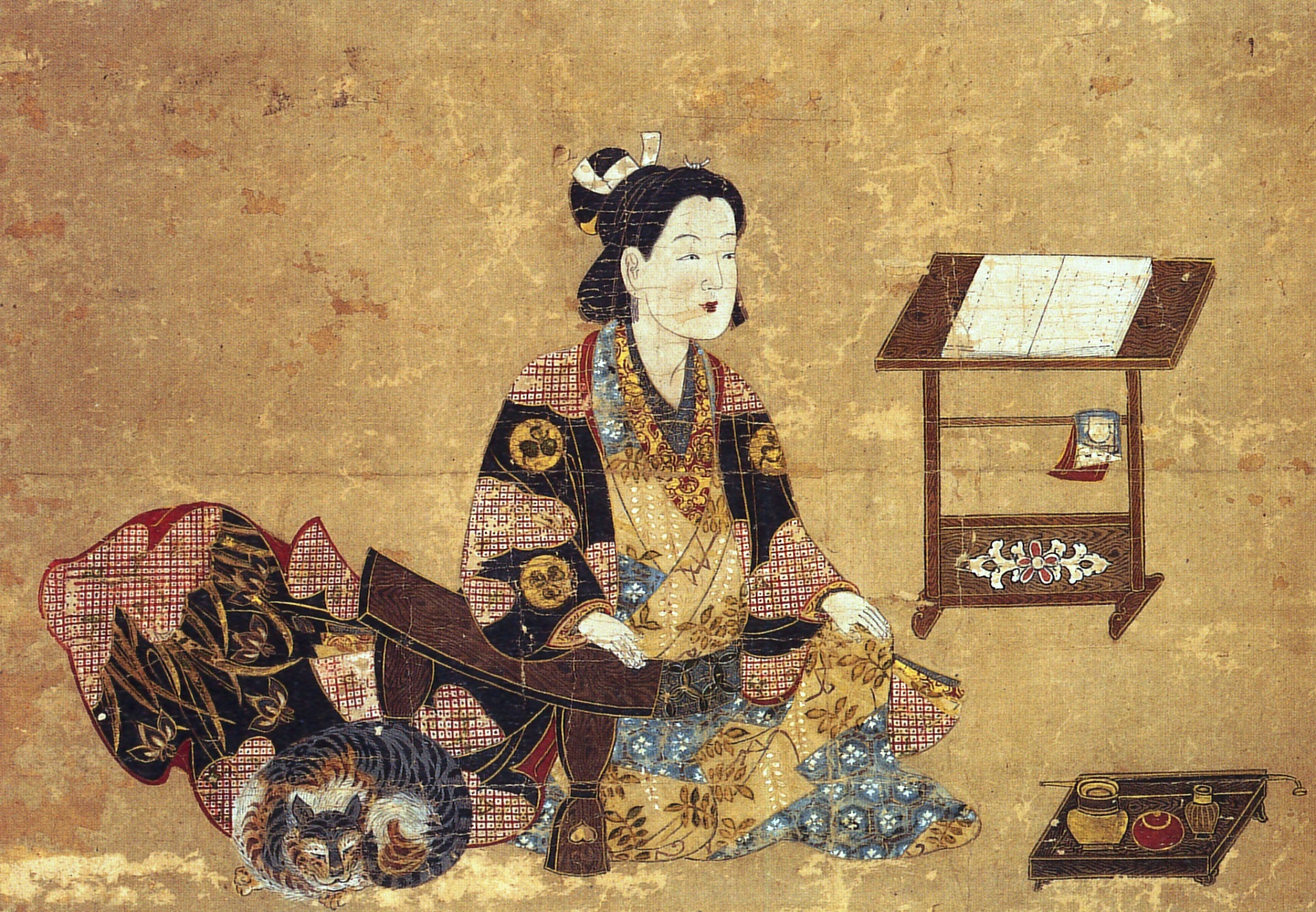|
Katagiri Katsumoto
was a Japanese warlord (''daimyō'') of Ibaraki, in the Azuchi–Momoyama period through early Edo period. In his youth was famed as one of the Seven Spears of Shizugatake, during the Battle of Shizugatake in May 1583. Biography Katsumoto hailed from an ancient samurai clan with a long and distinguished history. In the early Heian period, Katagiri clan served the Minamoto family, traditional head of the samurai that supplied early ''shōguns'' and their government, and ruled the southernmost part of Shinano region for nearly 500 years. Despite his lineage and the promising start at Battle of Shizugatake, Katsumoto's rise under Toyotomi Hideyoshi was relatively slow compared to his fellow "seven spears", which included Katō Kiyomasa and Fukushima Masanori. Katsumoto were more court samurai rather than warriors; Katsumoto was kept in the Osaka region, the de facto capital of Japan under the Toyotomi family, and his holdings were in Ibaraki area in the north. (Marked in present ... [...More Info...] [...Related Items...] OR: [Wikipedia] [Google] [Baidu] |
Karō
were top-ranking samurai officials and advisors in service to the ''daimyōs'' of feudal Japan. Overview In the Edo period, the policy of ''sankin-kōtai'' (alternate attendance) required each ''daimyō'' to place a ''karō'' in Edo and another in the home ''han'' (feudal domain). A ''karō'' who was in charge of a castle was called the ''jōdai karō'' (城代家老), while the one in Edo was called the ''Edo karō'' (江戸家老). A general term for a domain-based ''karō'' is ''kunigarō'' (国家老). Some domains referred to this position as ''bugyō'' (奉行) or ''toshiyori'' (年寄). The shogunate post of ''rōjū'' (elder) had many similarities to that of ''karō''. The famous samurai tale, ''Kanadehon Chūshingura'', describes events involving a ''karō''. The final Asano ''daimyō'' of the Ako ''han'' was Asano Naganori. While he was in Edo, he was sentenced to commit seppuku for the offense of drawing a sword against Kira Yoshinaka in Edo Castle. When the shog ... [...More Info...] [...Related Items...] OR: [Wikipedia] [Google] [Baidu] |
Katō Kiyomasa
was a Japanese ''daimyō'' of the Azuchi–Momoyama and Edo periods. His court title was Higo-no-kami. His name as a child was ''Yashamaru'', and first name was ''Toranosuke''. He was one of Hideyoshi's Seven Spears of Shizugatake. Biography Kiyomasa was born in what is now Nakamura-ku, Nagoya (situated in contemporary Aichi District, Owari Province) to Katō Kiyotada. Kiyotada's wife, Ito, was a cousin of Toyotomi Hideyoshi's mother. Kiyotada died while his son, Kiyomasa (then known as Toranosuke), was still young. Soon after, Toranosuke entered into Hideyoshi's service, and in 1576, at age 15, was granted a stipend of 170 ''koku''. In 1582, he fought in Hideyoshi's army at the Battle of Yamazaki, and later in 1583 at the Battle of Shizugatake. Owing to his achievement in that battle, he became known as one of the Seven Spears of Shizugatake and was rewarded with 3,000 additional ''koku''. In 1584, Kiyomasa took part in the Battle of Komaki and Nagakute against the Tokuga ... [...More Info...] [...Related Items...] OR: [Wikipedia] [Google] [Baidu] |
1615 Deaths
Events January–June * January 1 – The New Netherland Company is granted a three-year monopoly in North American trade, between the 40th and 45th parallels. * February – Sir Thomas Roe sets out to become the first ambassador from the court of the King of England to the Mughal Emperor Jahangir, sailing in the ''Lyon'' under the command of captain Christopher Newport. * March 10 – John Ogilvie, a Jesuit priest, is hanged and drawn at Glasgow Cross in Scotland for refusing to pledge allegiance to King James VI of Scotland; he will be canonised in 1976, becoming the only post-Reformation Scottish saint. * April 21 – The Wignacourt Aqueduct is inaugurated in Malta. * May 6 – The Peace of Tyrnau is signed between Matthias, Holy Roman Emperor, and Gábor Bethlen. * June 2 – The first Récollet missionaries arrive at Quebec City, from Rouen, France. * June 3 – The Eastern Army of Tokugawa Ieyasu and the Osaka Army of Toyotomi ... [...More Info...] [...Related Items...] OR: [Wikipedia] [Google] [Baidu] |
1556 Births
__NOTOC__ Year 1556 ( MDLVI) was a leap year starting on Wednesday (link will display the full calendar) of the Julian calendar. Events January–June * January 16 – Charles V, having already abdicated as Holy Roman Emperor, resigns the Kingdom of Spain in favour of his son, Philip II, and retires to a monastery. * January 23 – The Shaanxi earthquake, the deadliest earthquake in history, occurs with its epicenter in Shaanxi province, China; 830,000 people may have been killed. * February 5 – Truce of Vaucelles: Fighting temporarily ends between France and Spain. * February 14 ** Akbar the Great ascends the throne of the Mughal Empire at age 13; he will rule until his death in 1605, by which time most of the north and centre of the Indian subcontinent will be under his control. ** Archbishop of Canterbury Thomas Cranmer is declared a heretic. * February 22 ''(approx.)'' – Sophia Jagiellon marries Henry V, Duke of Brunswick-Lüneburg. * March ... [...More Info...] [...Related Items...] OR: [Wikipedia] [Google] [Baidu] |
Katagiri Takatoshi
Katagiri (written: ) is a Japanese surname. Notable people with the surname include: *, Japanese footballer *, Japanese Zen Buddhist *, Japanese comedian, actor, sculptor and potter *, Japanese ''daimyō'' *Michiko Katagiri, Japanese Paralympic swimmer *, Japanese alpine skier *Mineo Katagiri (1919-2005), Japanese minister and activist *, Japanese alpine skier *, Imperial Japanese Army general *, Brazilian Politician Fictional characters *, a character in the anime series ''Mobile Suit Gundam 00'' *, a character in the manga series ''Pani Poni'' *, a character in the anime series ''AKB0048'' *, a character in the visual novel ''Akaneiro ni Somaru Saka'' *, the main protagonist of the manga series ''Tomodachi Game is a Japanese manga series conceptualized by Mikoto Yamaguchi and written and illustrated by Yuki Sato. It has been serialized in Kodansha's ''Bessatsu Shōnen Magazine'' since December 2013. A television drama adaptation and two live-ac ...'' See also * Katagi ... [...More Info...] [...Related Items...] OR: [Wikipedia] [Google] [Baidu] |
Tsubouchi Shōyō
__NoTOC__ was a Japanese author, critic, playwright, translator, editor, educator, and professor at Waseda University. He has been referred to as a seminal figure in Japanese drama. "Wetmore deals cleanly with Japanese theatre as part of the modernization project ..Wetmore notes some of the new attempts within the ''kabuki'' frame then takes us through the work of seminal figures like Osanai Kaoru, Tsbouchi Shōyo, and so on. Biography He was born ''Tsubouchi Yūzō'' (坪内 雄蔵), in Gifu prefecture. He also used the pen name ''Harunoya Oboro'' (春のや おぼろ). His book of criticism, ''Shōsetsu Shinzui'' (The Essence of the Novel), helped free novels and dramas from the low opinion that the Japanese had of such literature. Tsubouchi's writings on realism in literature influenced Masaoka Shiki's ideas about realism in haiku. Tsubouchi's novel, ''Tōsei Shosei Katagi'' (Portraits of Contemporary Students), was one of the earliest modern novels in Japan. His Kabuki ... [...More Info...] [...Related Items...] OR: [Wikipedia] [Google] [Baidu] |
Kabuki
is a classical form of Japanese dance-drama. Kabuki theatre is known for its heavily-stylised performances, the often-glamorous costumes worn by performers, and for the elaborate make-up worn by some of its performers. Kabuki is thought to have originated in the very early Edo period, when founder Izumo no Okuni formed a female dance troupe who performed dances and light sketches in Kyoto. The art form later developed into its present all-male theatrical form after women were banned from performing in kabuki theatre in 1629. Kabuki developed throughout the late 17th century and reached its zenith in the mid-18th century. In 2005, kabuki theatre was proclaimed by UNESCO as an intangible heritage possessing outstanding universal value. In 2008, it was inscribed in the UNESCO Intangible Cultural Heritage Lists, UNESCO Representative List of the Intangible Cultural Heritage of Humanity. Etymology The individual kanji that make up the word ''kabuki'' can be read as , , and . ... [...More Info...] [...Related Items...] OR: [Wikipedia] [Google] [Baidu] |
Seppuku
, sometimes referred to as hara-kiri (, , a native Japanese kun reading), is a form of Japanese ritual suicide by disembowelment. It was originally reserved for samurai in their code of honour but was also practised by other Japanese people during the Shōwa period (particularly officers near the end of World War II) to restore honour for themselves or for their families. As a samurai practice, ''seppuku'' was used voluntarily by samurai to die with honour rather than fall into the hands of their enemies (and likely be tortured), as a form of capital punishment for samurai who had committed serious offences, or performed because they had brought shame to themselves. The ceremonial disembowelment, which is usually part of a more elaborate ritual and performed in front of spectators, consists of plunging a short blade, traditionally a ''tantō'', into the belly and drawing the blade from left to right, slicing the belly open. If the cut is deep enough, it can sever the abdominal ... [...More Info...] [...Related Items...] OR: [Wikipedia] [Google] [Baidu] |
Siege Of Osaka
The was a series of battles undertaken by the Japanese Tokugawa shogunate against the Toyotomi clan, and ending in that clan's destruction. Divided into two stages (winter campaign and summer campaign), and lasting from 1614 to 1615, the siege put an end to the last major armed opposition to the shogunate's establishment. The end of the conflict is sometimes called the , because the era name was changed from Keichō to Genna immediately following the siege. Background When Toyotomi Hideyoshi died in 1598, Japan came to be governed by the Council of Five Elders, among whom Tokugawa Ieyasu possessed the most authority. After defeating Ishida Mitsunari in the battle of Sekigahara in 1600, Ieyasu essentially seized control of Japan for himself, and abolished the Council. In 1603, the Tokugawa shogunate was established, with its capital at Edo. Hideyori and his mother Yodo-dono were allowed to stay at Osaka Castle, a fortress that had served as Hideyoshi's residence and he f ... [...More Info...] [...Related Items...] OR: [Wikipedia] [Google] [Baidu] |
Yodo-dono
or (1569 – June 4, 1615) was a prominently placed figure in the late-Sengoku period. She was the daughter of Oichi and sister of Ohatsu and Oeyo. She was a concubine and second wife of Toyotomi Hideyoshi, who was then the most powerful man in Japan. She also became the mother of his son and successor, Hideyori. Her time period being that of large turmoil and overhaul, Yodo-dono had an interest toward both politics and administration. She actively acted in the restoration of the Toyotomi clan after the fall of the Council of Five Elders, as Hideyori's guardian. Alongside her son, Yodo-dono led the last anti-Tokugawa shogunate resistance in the siege of Osaka. When her two younger sisters became prominent members linked to the Tokugawa clan, Oichi's three daughters were vital to maintaining a diplomatic relationship between the two most powerful clans of the time, Toyotomi and Tokugawa. Her sister, Oeyo, was the wife of the second shogun, Tokugawa Hidetada, and matriarch of ... [...More Info...] [...Related Items...] OR: [Wikipedia] [Google] [Baidu] |
Tokugawa Ieyasu
was the founder and first ''shōgun'' of the Tokugawa Shogunate of Japan, which ruled Japan from 1603 until the Meiji Restoration in 1868. He was one of the three "Great Unifiers" of Japan, along with his former lord Oda Nobunaga and fellow Oda subordinate Toyotomi Hideyoshi. The son of a minor daimyo, Ieyasu once lived as a hostage under daimyo Imagawa Yoshimoto on behalf of his father. He later succeeded as daimyo after his father's death, serving as a vassal and general of the Oda clan, and building up his strength under Oda Nobunaga. After Oda Nobunaga's death, Ieyasu was briefly a rival of Toyotomi Hideyoshi, before declaring his allegiance and fighting on his behalf. Under Toyotomi, Ieyasu was relocated to the Kanto plains in eastern Japan, away from the Toyotomi power base in Osaka. He built his castle in the fishing village of Edo (now Tokyo). He became the most powerful daimyo and the most senior officer under the Toyotomi regime. Ieyasu preserved his strength i ... [...More Info...] [...Related Items...] OR: [Wikipedia] [Google] [Baidu] |
Toyotomi Hideyori
was the son and designated successor of Toyotomi Hideyoshi, the general who first united all of Japan. His mother, Yodo-dono, was the niece of Oda Nobunaga. Early life Born in 1593, he was Hideyoshi's second son. The birth of Hideyori created a potential succession problem. To avoid it, Hideyoshi exiled his nephew and heir Hidetsugu to Mount Kōya and then ordered him to commit suicide in August 1595. Hidetsugu's family members who did not follow his example were then murdered in Kyoto, including 31 women and several children and also Mogami Yoshiaki's daughter. Hideyoshi refused to spare the life of Yoshiaki's daughter, who had only just arrived in Kyoto to become Hidetsugu's concubine and had not yet even met her future husband. When Hideyoshi died in 1598, the five regents he had appointed to rule in Hideyori's place began jockeying amongst themselves for power. Tokugawa Ieyasu seized control in 1600, after his victory over the others at the Battle of Sekigahara. Hid ... [...More Info...] [...Related Items...] OR: [Wikipedia] [Google] [Baidu] |






